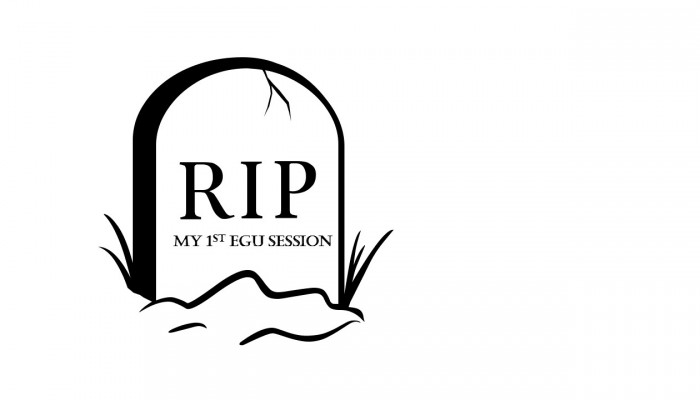Kripal Singh, CSIR-Central Institute of Medicinal and Aromatic Plants, Lucknow, India Description Fly ash, generated during coal combustion for thermal power generation, is dumped in man made ponds is a big problem to manage in several countries. In this picture, natural grasses are growing on a fly ash pond on National Thermal Power Plant, Unchahar, Uttar Pradesh, India. About Imaggeo Imaggeo is ...[Read More]
Energy, Resources and the Environment
Words on Wednesday: Environmental soil quality index and indicators for a coal mining soil
Words on Wednesday aims at promoting interesting/fun/exciting publications on topics related to Energy, Resources and the Environment. If you would like to be featured on WoW, please send us a link of the paper, or your own post, at ERE.Matters@gmail.com. *** Masto, R. E., Sheik, S., Nehru, G., Selvi, V. A., George, J., and Ram, L. C.: Environmental soil quality index and indicators for a coal min ...[Read More]
Seismology
GPlates short course @ EGU – Make your own plate-tectonic reconstructions
A dedicated short course on the use of the software GPlates will be held at this years’ EGU. GPlates is a “desktop software for the interactive visualisation of plate-tectonics“. It offers a “combination of interactive plate-tectonic reconstructions, geographic information system functionality and raster data visualisation“. GPlates is an open-source software running ...[Read More]
Soil System Sciences
Sure can smell the rain
Fly, thought, on golden wings, go alight on the cliffs, on the hills, where the sweet airs of our native soil smell soft and mild! Chorus of the Hebrew slaves, Nabucco Giuseppe Verdi Have you ever noticed the smell of rain? Why does wet soil smell so good? The smell of wet soil plants oils released into the soil during dry periods is due. These substances accumulate in the soil and mix with ...[Read More]
Soil System Sciences
Monday paper: Bayesian calibration of a soil organic carbon model using Δ14C measurements of soil organic carbon and heterotrophic respiration as joint constraints
Ahrens, B., Reichstein, M., Borken, W., Muhr, J., Trumbore, S. E., and Wutzler, T.: Bayesian calibration of a soil organic carbon model using Δ14C measurements of soil organic carbon and heterotrophic respiration as joint constraints, Biogeosciences, 11, 2147-2168, doi:10.5194/bg-11-2147-2014, 2014. Abstract Soils of temperate forests store significant amounts of organic matter and are cons ...[Read More]
Soil System Sciences
Monday paper: Impacts of climate variability on wetland salinization in the North American prairies
Nachshon U, Ireson A, van der Kamp G, Davies SR, Wheater HS. 2014. Impacts of climate variability on wetland salinization in the North American prairies. Hydrology and Earth System Sciences 18, 1251-1263. DOI: 10.5194/hess-18-1251-2014. Abstract The glaciated plains of the North American continent, also known as the “prairies”, are a complex hydrological system characterized by hummock ...[Read More]
Seismology
ECGS & ESC/EAEE Joint Workshop: Earthquake and Induced Multi-Risk Early Warning and Rapid Response
A joint workshop about earthquake and induced risk, early warning and rapid response is going to take place in Luxembourg, between the 18th and the 20th of November this year. The long list of researchers involved in the scientific committee, invited lecturers, and, the number of organisations supporting this workshop make this meeting one not to be missed. The supporting organisations are the Eur ...[Read More]
Seismology
Visual simulations of seismic waves
Sometimes it is not easy to understand (or explain) how seismic waves propagate through Earth. Recently, a number of very nice graphic examples have been uploaded on vimeo.com. The videos show the basic concepts of a travelling seismic wave such as the propagation of waves from a central source (similar to the ripples in a pond after a stone has been dropped in). The other animations show more com ...[Read More]
Energy, Resources and the Environment
Geomorphology Re-blog: Our EGU session died, what went wrong?
The EGU General Assembly 2015 is approaching, and with that a whole bunch of interesting new talks, posters and sessions! Or not!? What do you do when your proposed session has died because it simply did not attract enough submissions? Sabine Kraushaar did some session soul-searching and shared her advice on the Geomorphology Division Blog. Here’s what happened… *** “Have you eve ...[Read More]
Geomorphology
Our EGU session died, what went wrong?
Have you ever had this experience? You develop a session which you think could be such a great platform or a subject that definitely interests a lot of people and then only a few people register…this happened to Jan, me, and several others this year and our proposed sessions (GM1.2 Emerging research fields in geomorphology and GM 1.4 Data wealth versus data poverty – new strategies for geomo ...[Read More]

